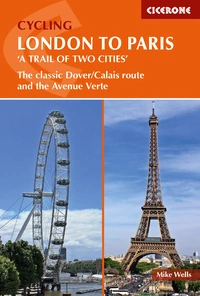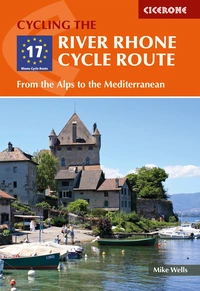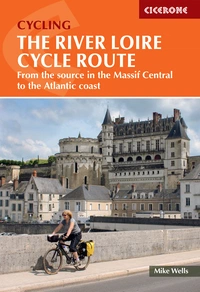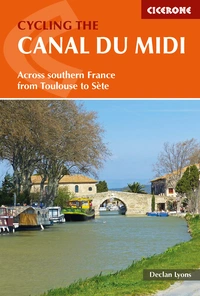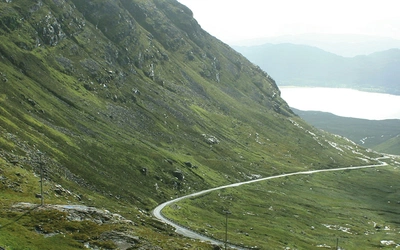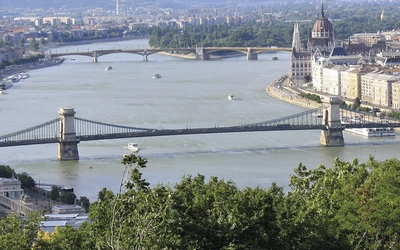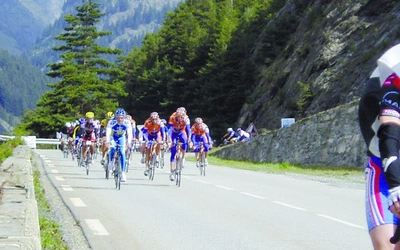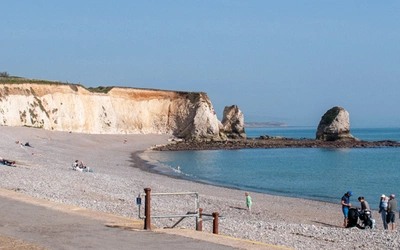A trail of two cities: A cycle route from London to Paris
There are two long-distance cycle routes between London and Paris: the 'classic route' and the Avenue Verte. Cicerone author Mike Wells tells us more.
Both routes are well within the capabilities of cyclists of moderate fitness and will generally take between five days and a week – meaning that a round trip, including a few days sightseeing in Paris, can easily be accomplished in a fortnight.
At 490km (excluding the Channel crossing), the traditional/classic route crosses the Channel either by ferry from Dover to Calais or via the Channel Tunnel. The alternative route, the Avenue Verte, was launched in 2012 to celebrate the London Olympics, offering a shorter journey of 387km but requiring a longer ferry crossing from Newhaven to Dieppe.
Lasting legacy
One soft action of the London Olympics that received less publicity at the time, but has left a lasting legacy, was the creation of a fully waymarked cycle route between Paris and London, designed to provide a different way for French visitors to reach London for the Games. British and French cycling organisations and local governments in Surrey, Sussex and Normandy came together to create the Avenue Verte, a 387km (241mile) trail using a mixture of suburban streets, quiet country roads, disused railway lines and canal towpaths. It starts at the French ‘zero point’ (a bronze plaque in front of Notre Dame cathedral from which distances from Paris are measured) and ends beside the London Eye on the Southbank in central London. En route, it crosses the English Channel by way of ferry between Dieppe and Newhaven and runs through attractive countryside of chalk downland, limestone plateau and Wealden valleys.
But this is not the only route by which cyclists can journey between the two great Olympic cities of London and Paris. For centuries, the most popular route was to follow the old Roman road of Watling Street from London to Dover, cross the channel by way of the short ferry route between Dover and Calais and then follow Napoleon’s Route National 1 from Calais to Paris.
Tower to tower
In order to avoid heavy traffic on main roads, I have devised a route following Sustrans cycle trails through south-east London and Kent in England and country roads, voie verte and canal towpaths in France. The result is a cycle ride that runs from the Tower of London to the Eiffel Tower, a tower-to-tower route that I have named the Trail of Two Cities. On the approach to central Paris, it passes right beside the main Olympic Park surrounding the Stade de France in St Denis.
This route, together with the already waymarked and established Avenue Verte, is the subject of my guidebook, Cycling London to Paris. This book gives detailed route descriptions of both routes in both directions, a feature that I hope will encourage enthusiastic cycle tourists to travel between the two cities, going out by one route and returning by the other.
The Trail of Two Cities is 490km (304miles) in length, with 147km (92miles) in England and 343km (211miles) in France. Returning by Avenue Verte would give a total round-trip route of 877km (545 miles). A fast cyclist could complete the return journey in eight days, while a more leisurely pace would enable less fit cyclists to get to Paris and back in two weeks. In Kent and in northern France, the route occasionally undulates over chalk downland. There are a few short hills, but as the highest points reached are only 183m on the North Downs in England and 178m at Crèvecœur in France, these are not much of an obstacle.
Cycling London to Paris
The classic Dover/Calais route and the Avenue Verte
£14.95
Guidebook to the London to Paris Bike Ride, including both the 500km traditional route, which makes use of cycle tracks and quiet roads plus a ferry crossing from Dover, and the 400km Avenue Verte, a waymarked route via Newhaven/Dieppe which makes greater use of dedicated cycle paths. Each takes 5-7 days and they can be combined for a round trip.
More informationLeaving London
Leaving from the Tower of London, the route immediately crosses the Thames and follows the proposed route of cycle superhighway CS4 to Woolwich. It then uses part of the London Cycle Network to reach the edge of Greater London where Sustrans route NCN1, part of the National Cycle Network, is joined and followed beside the A2/M2 motorway to Rochester in Kent. A short, steep climb through shady woodland takes the route over the North Downs, then it undulates through the Weald along the traffic-free Pilgrims’ Way, part of the old pilgrim route from Winchester to Canterbury.
After passing through the growth town of Ashford, quiet country roads and the towpath of the Royal Military Canal are used to cross Romney Marsh before reaching the English Channel near Folkestone. Here cyclists have a choice of ways to reach France. They can either take their bikes on a Eurotunnel Shuttle train from Folkestone to Calais (two departures a day include a van adapted to carry cycles), or continue along the top of the white cliffs to Dover and catch one of the 40 car-ferry sailings a day (depending upon season), which all carry cycles.
Reaching France
Once in France, a canal towpath and disused railway line are used to cross the coastal plain before the route undulates on minor roads through downland, climbing in and out of pretty valleys, to reach the river Somme at Abbeville. After a level ride along the towpath of the canalised Somme to Amiens, the Coulée Verte track along another old railway is followed up the Selle valley and over more downland to Beauvais. To avoid low hills and the limestone Vexin plateau that lie across the route to Paris, the route turns south-east down the Thérain valley to Chantilly, then climbs over one last ridge to reach the Paris basin.


